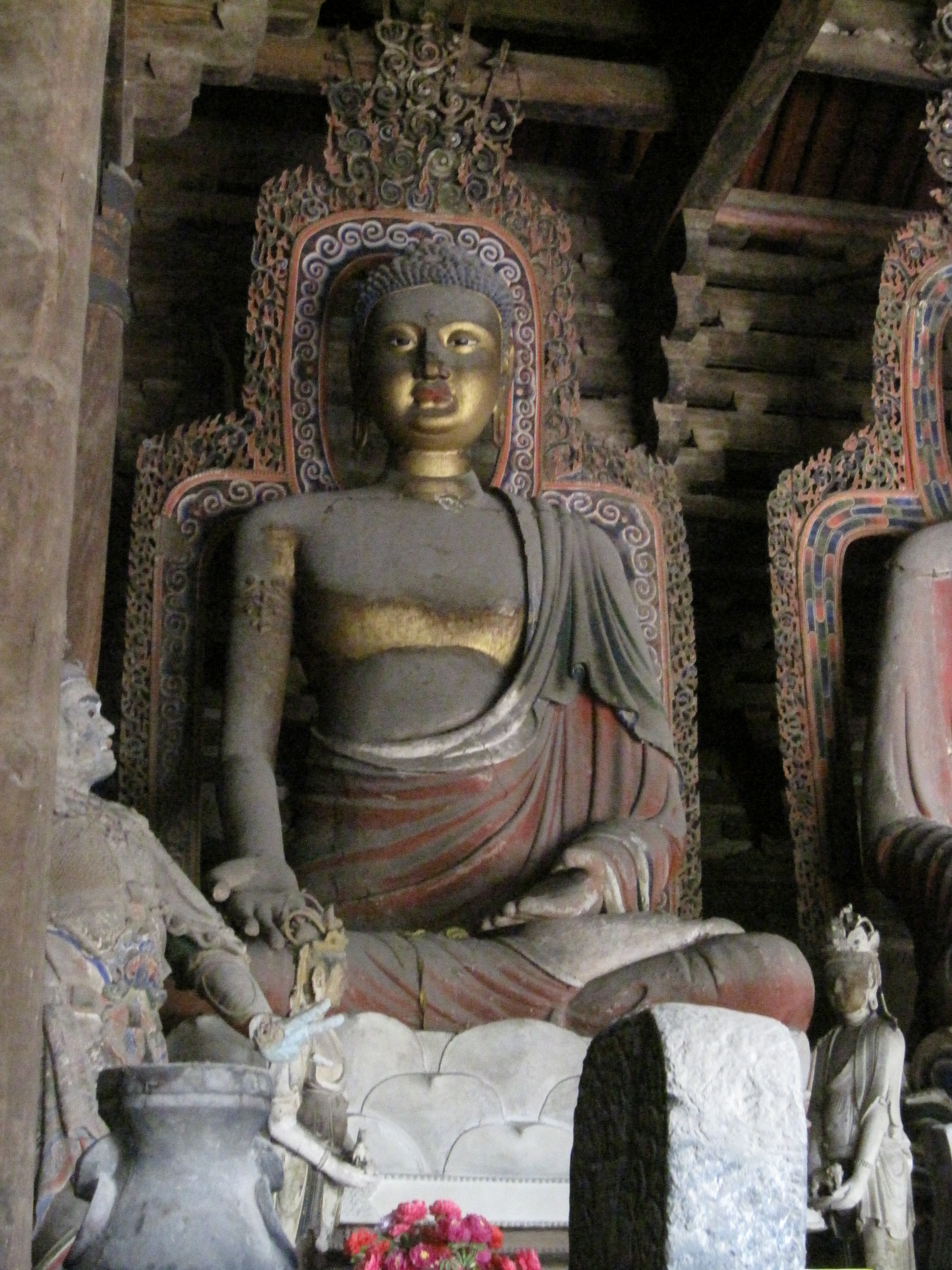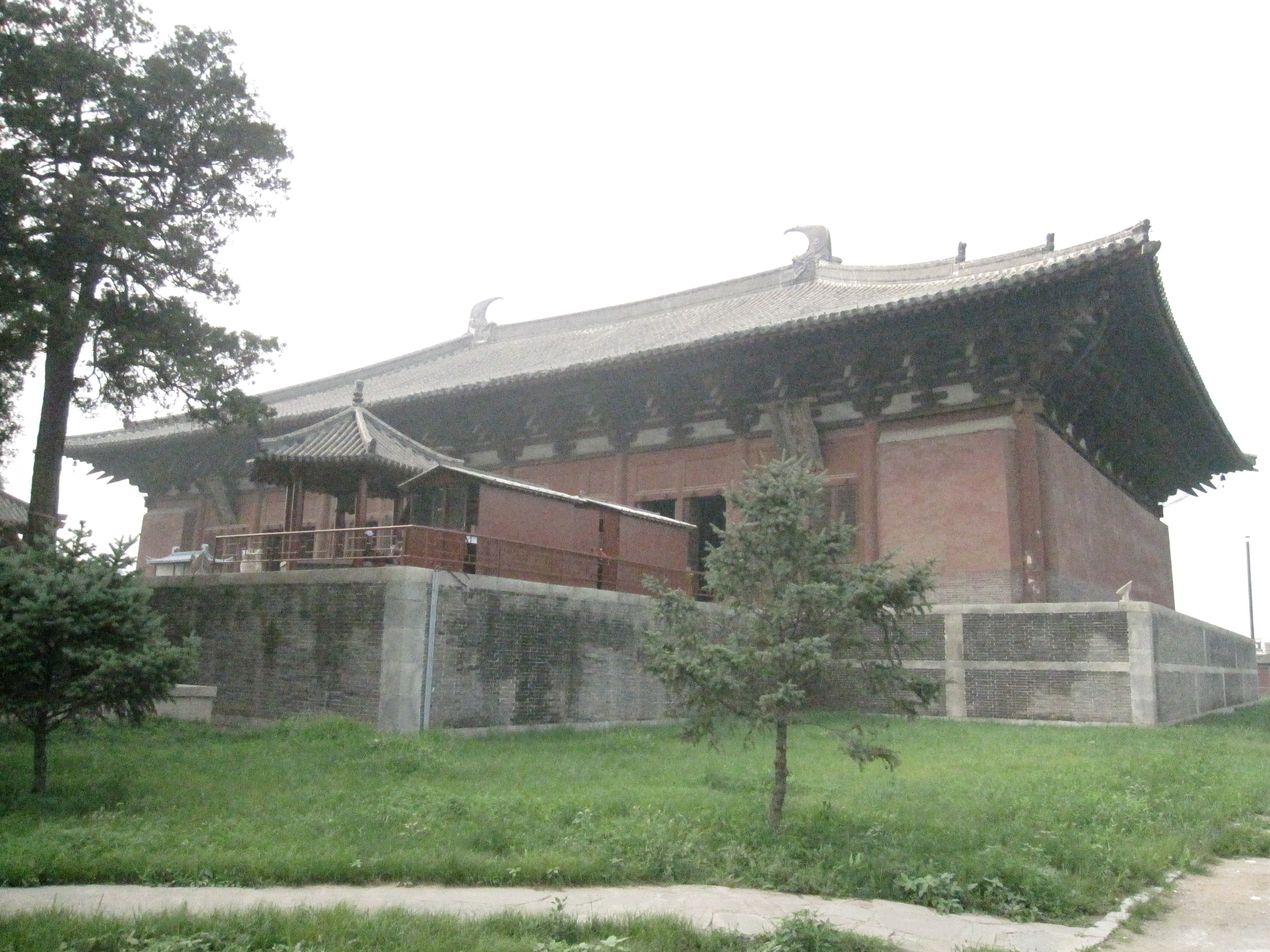Fengguo Temple on:
[Wikipedia]
[Google]
[Amazon]
Fengguo Temple () is a

 The Main or
The Main or
''Liao Architecture''
Honolulu: University of Hawaii Press, 1997. * {{Buddhist temples in China 11th-century Buddhist temples Buddhist temples in Liaoning Major National Historical and Cultural Sites in Liaoning Liao dynasty architecture
Buddhist temple
A Buddhist temple or Buddhist monastery is the place of worship for Buddhism, Buddhists, the followers of Buddhism. They include the structures called vihara, chaitya, stupa, wat, khurul and pagoda in different regions and languages. Temples in B ...
located in Yixian, Liaoning Province
)
, image_skyline =
, image_alt =
, image_caption = Clockwise: Mukden Palace in Shenyang, Xinghai Square in Dalian, Dalian coast, Yalu River at Dandong
, image_map = Liaoning in China (+all claims hatched).svg
, ...
, China
China, officially the People's Republic of China (PRC), is a country in East Asia. With population of China, a population exceeding 1.4 billion, it is the list of countries by population (United Nations), second-most populous country after ...
. The temple was first founded in 1020 during the Liao dynasty (916–1125), and grew quite large during the subsequent centuries. Today, only two halls, two gates, and a decorative arch survive. The most important surviving building is the Mahavira Hall, a very large hall that dates from 1020. The hall is notable for containing seven large Buddha sculptures, and other smaller sculptures, all dating from the Liao Dynasty. It has had several names over the centuries, including the "Xianxi Temple" (; Liao dynasty), "Seven Buddhas Temple" (; Liaoning dynasty) and "Dafengguo Temple" (; Jin dynasty).
History
Historical records about the history of Fengguo Temple are limited. Most of the history can only be ascertained from the twenty or so stele on the grounds of the temple.Steinhardt (1997), 87. Replacing an earlier temple at the site called Xianxi Temple, Fengguo Temple was founded in 1020 by Jiao Xiyun, a retired scholar, and its construction was supervised by a monk called Qinghui. In 1107 a monk called Yizhuo worked at the monastery repairing and completing religious images. His work was completed in 1140 at the cost of 10 million cash. An earthquake severely damaged the temple in 1290, and a son-in-law of aMongolian
Mongolian may refer to:
* Something of, from, or related to Mongolia, a country in Asia
* Mongolian people, or Mongols
* Bogd Khanate of Mongolia, the government of Mongolia, 1911–1919 and 1921–1924
* Mongolian language
* Mongolian alphabet
* ...
Khan donated money for repairs.Steinhardt (1997), 88. The mid-14th-century temple is recorded as being quite large, featuring at least three pavilions, one in front of the Seven-Buddha hall and one on either side, a dharma hall, an “abstinence hall”, three different kitchen areas, monks quarters, a bathing chamber, a Ten Thousand Buddha hall and many other assorted buildings. Between 1487 and 1888 the hall was repaired at least seventeen times. The temple was most recently damaged in 1948 when it was bombed, and was only repaired again in the 1980s.Steinhardt (1997), 89.
Layout
Originally, Fengguo Temple had a Dharma Hall behind theMahavira Hall
A Mahavira Hall, usually simply known as a Main Hall, is the main hall or building in a traditional Chinese culture, Chinese Buddhist temple, enshrining representations of Gautama Buddha and various other buddhas and bodhisattvas. It is encoun ...
, three pavilions in front, and a gate. One of the pavilions was located along the axis and two more faced each other inwards along the axis. Currently, only the Mahavira Hall survives from the temple's founding.Steinhardt (1997), 96-97.
The present-day temple also has four other structures of note laid out on the north–south axis, all built during the Qing dynasty
The Qing dynasty ( ), officially the Great Qing, was a Manchu-led Dynasties of China, imperial dynasty of China and an early modern empire in East Asia. The last imperial dynasty in Chinese history, the Qing dynasty was preceded by the ...
(1642–1912). Beginning in the south, there is an outer gate followed by an inner gate. Next, a decorated archway stands in front of the Wuliang Hall, a small three-bay hall that is directly in front of the Mahavira Hall.Pamphlet, 3-4.
Main Hall
Mahavira Hall
A Mahavira Hall, usually simply known as a Main Hall, is the main hall or building in a traditional Chinese culture, Chinese Buddhist temple, enshrining representations of Gautama Buddha and various other buddhas and bodhisattvas. It is encoun ...
(, ''Dàxíong Bǎodiàn'') is very large for a Chinese timber hall, measuring nine by five bays. It faces south on a platform and measures 55.8 by 25.9 meters. In front of the three central bays extend a yuetai (stone platform) measuring 37 meters east to west and 15 meters north to south. Two structures dating from the Qing Dynasty stand on the yuetai: two kiosks and a stone incense burner. There is also a small yuetai at the back of the hall. Steinhardt suggests that this yuetai formerly served as a link to the no longer extant Dharma Hall.Steinhardt (1997), 89.
The main hall contains seven large sculptures of Buddhas from past ages, a rare arrangement in Buddhist temples.Howard (2006), 381. The Buddhas are raised on an 87 cm high platform, with each of the seven inner bays holding one sculpture. In addition to Sakyamuni
Siddhartha Gautama, most commonly referred to as the Buddha (),*
*
*
was a wandering ascetic and religious teacher who lived in South Asia during the 6th or 5th century BCE and founded Buddhism. According to Buddhist legends, he was ...
(the Buddha of the present age), the six other Buddhas represented are Vipashyin, Sikhin, Visvabhu, Krakucchanda, Kanakamuni and Kashyapa
Kashyapa (, ) is a revered Vedic sage of Hinduism., Quote: "Kasyapa (Rudra),(Vedic Seer)..." He is one of the Saptarishis, the seven ancient sages of the ''Rigveda''. Kashyapa is the most ancient and venerated rishi, along with the other Sa ...
. Each of the seven Buddhas is flanked by two bodhisattvas, and a guardian king faces the south entry at each side of the altar. Behind the seven Buddhas, facing the back door, is a statue of Guanyin
Guanyin () is a common Chinese name of the bodhisattva associated with Karuṇā, compassion known as Avalokiteśvara (). Guanyin is short for Guanshiyin, which means " he One WhoPerceives the Sounds of the World". Originally regarded as m ...
.
Only 20 interior pillars are used within the hall. There are four rows of columns in the hall, but an entire row (apart from the end pillars) has been eliminated in front of the Buddha statues, so as not to impede viewing. The bracket sets on the outside of the hall are all seventh rank, the highest.Steinhardt (1997), 91. The main hall is the earliest Chinese building that uses bracket sets in between columns instead of just simple strut
A strut is a structural component commonly found in engineering, aeronautics, architecture and anatomy. Struts generally work by resisting longitudinal compression, but they may also serve in tension.
A stay is sometimes used as a synonym for ...
s.Steinhardt (1997), 92. The structure of the hall uses more than 30 types of timber pieces in between the column tops and the roof.Steinhardt (1997), 93.
The Present
In 2013, Fengguo Temple was placed on China's tentative list forUNESCO World Heritage Site
World Heritage Sites are landmarks and areas with legal protection under an treaty, international treaty administered by UNESCO for having cultural, historical, or scientific significance. The sites are judged to contain "cultural and natural ...
consideration, along with the Pagoda of Fogong Temple
The Sakyamuni Pagoda of Fogong Temple () of Ying County, Shanxi province, China, is a wooden Chinese pagoda. It is also known as the Wooden Pagoda of Ying County (Chinese: 应县木塔, pinyin: yìngxiàn mùtǎ). It was constructed in 1056, d ...
.
Although Fengguo Temple is not explicitly mentioned by name, in Jung Chang
Jung Chang (, ; born 25 March 1952) is a Chinese-born British author. She is best known for her family autobiography ''Wild Swans'', selling over 10 million copies worldwide but Censorship in China, banned in the China, People's Republic of Ch ...
's best-selling autobiography ''Wild Swans
''Wild Swans: Three Daughters of China'' is a family history that spans a century, recounting the lives of three female generations in China, by Chinese writer Jung Chang. First published in 1991, ''Wild Swans'' contains the biographies of her m ...
'' the author tells how her grandparents first met there, in a "casual" encounter arranged by her great-grandfather in 1924.
References
Citations
Bibliography
* ''Fengguosi''. Booklet published by the temple. * Howard, Angela Falco, et al. ''Chinese Sculpture''. New Haven:Yale University Press
Yale University Press is the university press of Yale University. It was founded in 1908 by George Parmly Day and Clarence Day, grandsons of Benjamin Day, and became a department of Yale University in 1961, but it remains financially and ope ...
, 2006.
*Steinhardt, Nancy Shatzman''Liao Architecture''
Honolulu: University of Hawaii Press, 1997. * {{Buddhist temples in China 11th-century Buddhist temples Buddhist temples in Liaoning Major National Historical and Cultural Sites in Liaoning Liao dynasty architecture